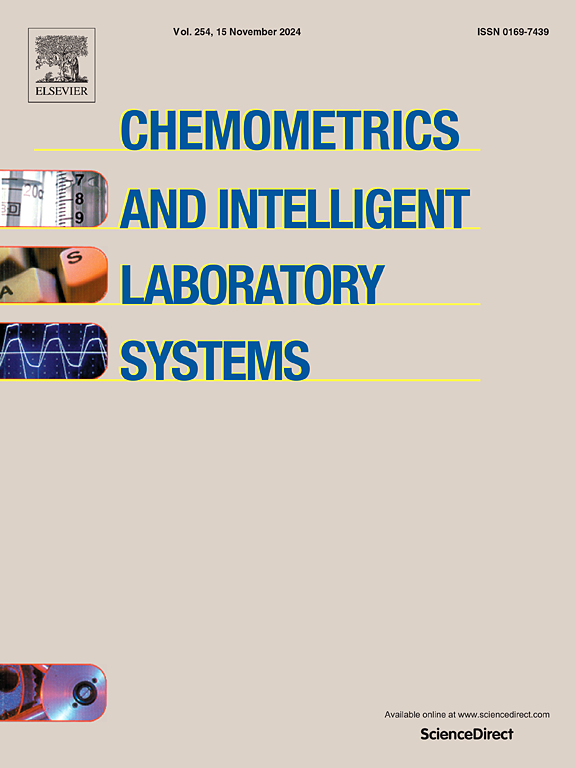Adversarial Domain Adaptation Guided by Farthest Distance for open set electronic nose drift compensation
IF 3.8
2区 化学
Q2 AUTOMATION & CONTROL SYSTEMS
Chemometrics and Intelligent Laboratory Systems
Pub Date : 2025-10-22
DOI:10.1016/j.chemolab.2025.105554
引用次数: 0
Abstract
With advancements in modern science and technology, electronic noses (ENs) have gained significant attention for their applications in environmental monitoring, food quality inspection, and medical equipment. ENs mimic biological olfactory systems to classify gases using arrays of sensors and pattern recognition models. However, gas sensor drift poses a major challenge, leading to performance degradation in EN systems. To address this, Domain Adaptation (DA) methods align source domain data with target domain drift data. While traditional DA methods assume identical class compositions in both domains, this is often unrealistic in practice, leading to suboptimal results. Open Set Domain Adaptation (OSDA) methods address unknown classes in the target domain, but they often focus too much on distinguishing unknown classes, neglecting accurate recognition of known classes. To overcome these limitations, we propose the Adversarial Domain Adaptation Guided by Farthest Distance (ADA-FDG), comprising two complementary modules: Farthest Distance Guide (FDG) and Confidence Normalized Adaptive Factor (CNAF). FDG adaptively builds a guide set that lies farthest from the source distribution in feature space, ensuring adversarial alignment learns to the edge region distribution. CNAF assigns a weight to each batch proportional to its classification confidence, preventing unknown-class samples from contaminating the ADA process. By integrating FDG and CNAF in an adversarial training framework, ADA-FDG achieves more precise alignment of source and target distributions while preserving clear separation between known and unknown classes. Extensive experiments on two benchmark datasets demonstrate that ADA-FDG consistently outperforms state-of-the-art closed and open set DA methods, delivering significant improvements in overall, known-class, and unknown-class accuracy.
基于最远距离制导的开集电子鼻漂移补偿对抗域自适应
随着现代科学技术的进步,电子鼻在环境监测、食品质量检测、医疗设备等方面的应用越来越受到人们的重视。ENs模拟生物嗅觉系统,利用传感器阵列和模式识别模型对气体进行分类。然而,气体传感器漂移带来了重大挑战,导致EN系统的性能下降。为了解决这个问题,域适应(DA)方法将源域数据与目标域漂移数据对齐。虽然传统的数据处理方法在两个领域中假设相同的类组成,但这在实践中往往是不现实的,从而导致次优结果。开放集域自适应(Open Set Domain Adaptation, OSDA)方法主要针对目标域中的未知类,但往往过于关注识别未知类,而忽略了对已知类的准确识别。为了克服这些限制,我们提出了由最远距离引导的对抗域自适应(ADA-FDG),它由最远距离引导(FDG)和置信归一化自适应因子(CNAF)两个互补模块组成。FDG自适应地构建距离源分布在特征空间中最远的引导集,保证对抗性对齐学习到边缘区域分布。CNAF为每个批次分配与其分类置信度成比例的权重,防止未知类别的样品污染ADA过程。通过在对抗性训练框架中集成FDG和CNAF, ADA-FDG实现了更精确的源和目标分布对齐,同时保留了已知和未知类别之间的明确分离。在两个基准数据集上进行的大量实验表明,ADA-FDG始终优于最先进的封闭集和开放集数据分析方法,在总体、已知类和未知类精度方面都有显著提高。
本文章由计算机程序翻译,如有差异,请以英文原文为准。
求助全文
约1分钟内获得全文
求助全文
来源期刊
CiteScore
7.50
自引率
7.70%
发文量
169
审稿时长
3.4 months
期刊介绍:
Chemometrics and Intelligent Laboratory Systems publishes original research papers, short communications, reviews, tutorials and Original Software Publications reporting on development of novel statistical, mathematical, or computer techniques in Chemistry and related disciplines.
Chemometrics is the chemical discipline that uses mathematical and statistical methods to design or select optimal procedures and experiments, and to provide maximum chemical information by analysing chemical data.
The journal deals with the following topics:
1) Development of new statistical, mathematical and chemometrical methods for Chemistry and related fields (Environmental Chemistry, Biochemistry, Toxicology, System Biology, -Omics, etc.)
2) Novel applications of chemometrics to all branches of Chemistry and related fields (typical domains of interest are: process data analysis, experimental design, data mining, signal processing, supervised modelling, decision making, robust statistics, mixture analysis, multivariate calibration etc.) Routine applications of established chemometrical techniques will not be considered.
3) Development of new software that provides novel tools or truly advances the use of chemometrical methods.
4) Well characterized data sets to test performance for the new methods and software.
The journal complies with International Committee of Medical Journal Editors'' Uniform requirements for manuscripts.

 求助内容:
求助内容: 应助结果提醒方式:
应助结果提醒方式:


